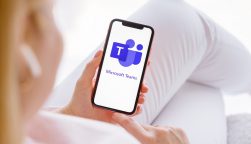Elon Musk has announced that Twitter will launch encrypted direct messaging this week, which should make communicating privately on the social media platform more secure than it has ever been.
At the moment, anyone working for Twitter could, in theory, read direct messages sent by any user. After encrypted messaging is rolled out, however, this would no longer be possible.
Video chat is also coming to Twitter, according to Musk, which might be the first in a long line of upcoming features designed to make the platform more of a multi-purpose, social hub and provide users with fewer reasons to log off.
End-to-End Encryption for Twitter DMs Is Here
In a tweet published today, Musk said that the encryption would “grow in sophistication rapidly” and suggested a good acid test would be if he “could not see [users’] DMs even if there was a gun to my head.”
End-to-end encryption has become a unique selling point for some apps, most notably WhatsApp and privacy-focused messaging app Signal, which now has tens of millions of users.
Facebook Messenger, however, is not end-to-end encrypted at present, but direct communication over Instagram (also owned by Meta) is protected in this way.
Other changes to direct messaging on Twitter include the ability for users to reply to any direct message within a thread (currently, you can only reply to the latest one) as well as an expansion of the emojis you can use to respond to DMs on the platform.
Video Chat for Twitter
In the same tweet revealing the end-to-end encryption plans, Musk teased the imminent release of “voice and video chat from your handle to anyone on this platform, so you can talk to people anywhere in the world without giving them your phone number.”
This would turn Twitter into a tool businesses could feasibly use to contact new clients or find new leads, although it won’t have many of the useful sales, collaboration, or contact management-based features that modern-day VoIP systems offer.
The pandemic also saw a meteoric rise of platforms offering web conferencing, such as Zoom, Microsoft Teams and Google Meet, with all competing fiercely and adding features regularly. It would likely take a lot to tear loyal customers away from these products.
Twitter: What’s Next for Musk’s Social Media Experiment?
In reality, we may not have to wait long for more features – business-focused or otherwise – if Musk’s publicly-stated desires for Twitter to become an all-encompassing app are borne out.
Last year, the CEO – who also heads up Tesla and SpaceX – made no secret of his admiration for Chinese app WeChat, which is a lot more multi-purpose than Twitter or other social media apps.
But it seems Twitter becoming just one part of a larger, umbrella app that has a much wider set of functions and features is more likely.
Musk’s purchase of the domain “X.com” half a decade ago, as well as comments made in various shareholder meetings, suggests plans for something bigger.
At the moment, plans are vague – but Musk will have to get his house in order before trying to take on the likes of Facebook, TikTok, and Snapchat, let alone WeChat.
Since Musk’s acquisition, Twitter has been plagued by internal scandals, layoffs, pay disputes, content moderation issues and advertisers jumping ship.
So tumultuous has Musk’s reign been that April – during which Twitter was merged into X Corp last month, and technically ceased to exist as an independent entity – was a relatively quiet month by recent standards.
What the future has in store for Twitter is unclear at best. Right now it feels as if there’s an equal chance of it turning into the biggest social media app on the market, or fading out of existence completely.





